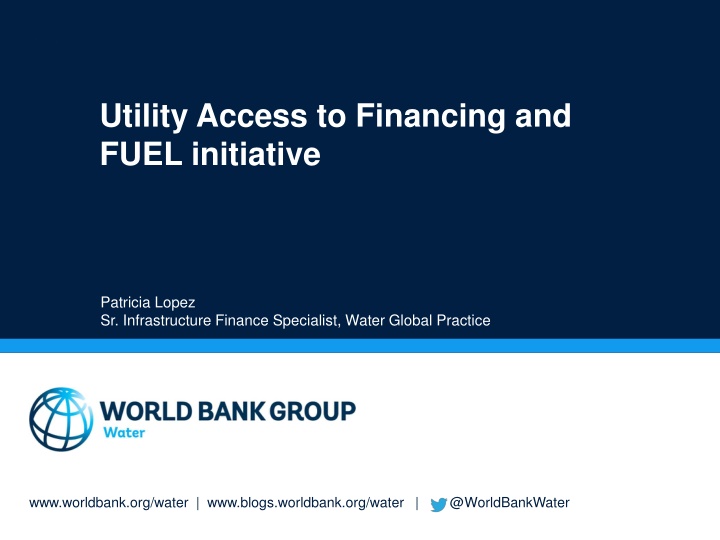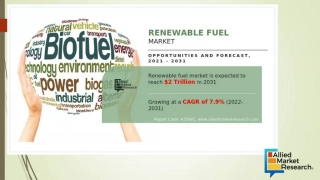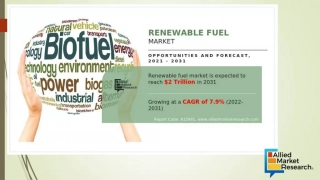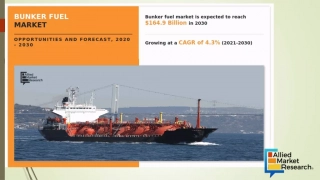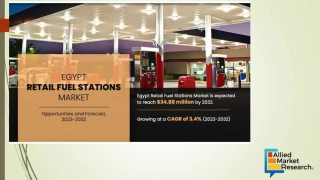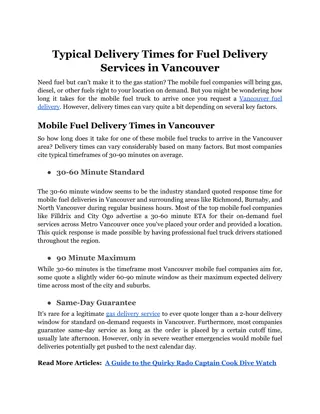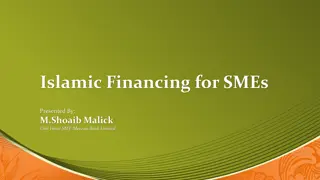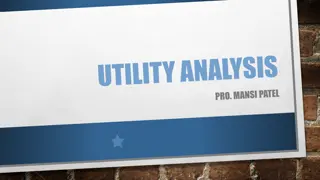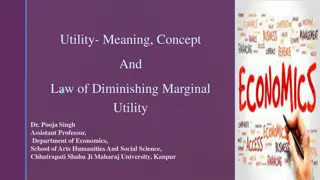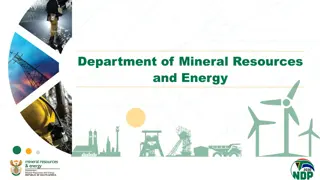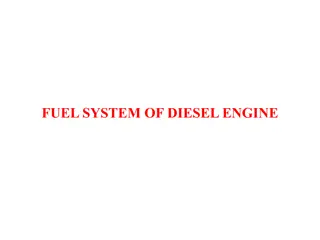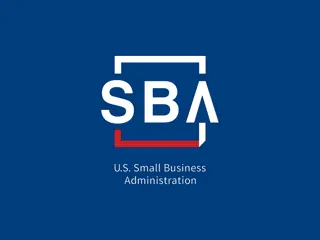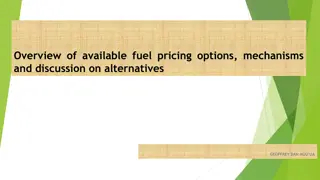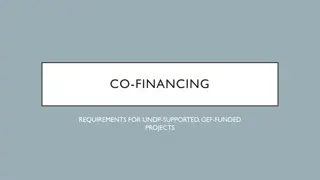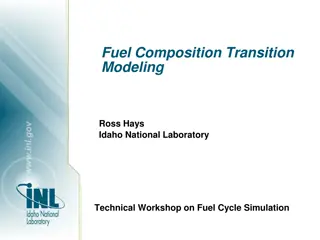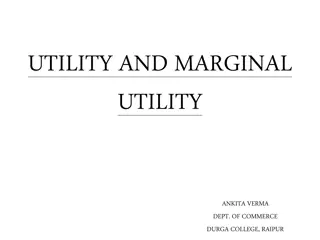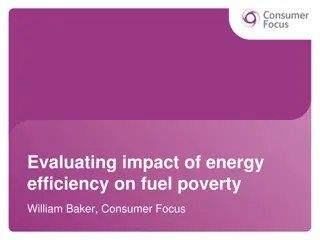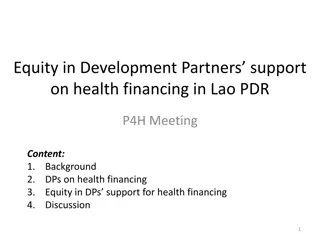Utility Access to Financing and FUEL initiative
Ways to improve financial sustainability for utilities in developing countries include cost savings, boosting operational efficiency, mobilizing revenue sources, leveraging commercial finance, and achieving sustainable service financing. Financial sustainability requires addressing funding gaps, reducing financial costs, and increasing revenue streams. By diagnosing current situations, saving costs, mobilizing diverse revenue sources, and leveraging financial instruments, utilities can ensure long-term financial viability.
Download Presentation

Please find below an Image/Link to download the presentation.
The content on the website is provided AS IS for your information and personal use only. It may not be sold, licensed, or shared on other websites without obtaining consent from the author.If you encounter any issues during the download, it is possible that the publisher has removed the file from their server.
You are allowed to download the files provided on this website for personal or commercial use, subject to the condition that they are used lawfully. All files are the property of their respective owners.
The content on the website is provided AS IS for your information and personal use only. It may not be sold, licensed, or shared on other websites without obtaining consent from the author.
E N D
Presentation Transcript
Utility Access to Financing and FUEL initiative Patricia Lopez Sr. Infrastructure Finance Specialist, Water Global Practice www.worldbank.org/water | www.blogs.worldbank.org/water | @WorldBankWater
Tariffs, Taxes and Transfers Cash Sources of Funding Requirements Revenues from Tariffs, Taxes and Transfers not always enough to cover cost of WSS service Funding Gap Capital Investments (Rehabilitation and new) = Financing Transfers (from donors) WSS Utilities must increase cash generated from operations and access financing to achieve objectives Taxes (Govt. grants) Maintenance Cost Tariffs Operating Cost 1
A Typical Utility in a Developing Country is Low in the Ladder of Financial Sustainability Financial sustainable + Country Conditions and Developed Financial Markets Fully Creditworthy Commercial Finance Donor/Public Credit Enhancements Financial Sustainable + Credit History Becoming Creditworthy Revenue + other Reliable Resources Cover full Cost of Service Financially Sustainable Profitable in Any Given Year But Not Sustainable in Long Term Concessional Finance Operating Cost Recovery Government Grants (possibly borrowed from donors) Pay-As-You-Go Recovery of Cash Outlays Capital subsidies essential to keep utility afloat Unviable Loss Making Utilities Capital & Operational Subsidies to keep utility afloat 2
What are potential ways to improve financial sustainability ? Costs Funding Financial costs Financing gap 1. Cost savings Financial costs Financial costs For ongoing capex needs Capex Financing gap Financial costs Commercial finance Financial costs Financing gap Commercial finance Capex Capex Capex Capex Tariffs Conces- sional Tariffs recover a large part of the costs Conces- sional Conces- sional Conces- sional Tariffs Tariffs OPEX and mainte- nance OPEX and mainte- nance OPEX and mainte- nance OPEX and mainte- nance OPEX and mainte- nance Tariffs Tariffs Taxes Taxes Taxes Taxes Taxes Targeted taxes only 1. Diagnose and Look ahead Define strategy. 2. Save costs through boosting operational efficiency Lower Opex and maintenance costs, Capex efficiencies 3. Mobilize revenue sources Raise tariffs and user charges. Mobilize domestic taxes, and concessional loans and grants. 4. Leverage commercial finance (Maybe through blending with concessional finance) 5. Services financed sustainably going forward 3
Boost operational efficiency: key measures Improving bill collection Reducing non-revenue water Boosting energy efficiency Improving staff productivity
Improved efficiency = increased revenues Information on 278 utilities in Danube region (IBNET) - 13% are currently financially viable - 74% could be viable with efficiency gains, particularly reduction in NRW But implementing efficiency measures sometimes also requires access to financing .particularly NRW reduction and improved energy efficiency
What are potential ways to improve financial sustainability (and creditworthiness) ? Costs Funding Financial costs Financing gap 1. Cost savings Financial costs Financial costs For ongoing capex needs Capex Financing gap Financial costs Commercial finance Financial costs Financing gap Commercial finance Capex Capex Capex Capex Tariffs Conces- sional Tariffs recover a large part of the costs Conces- sional Conces- sional Conces- sional Tariffs Tariffs OPEX and mainte- nance OPEX and mainte- nance OPEX and mainte- nance OPEX and mainte- nance OPEX and mainte- nance Tariffs Tariffs Taxes Taxes Taxes Taxes Taxes Targeted taxes only 1. Diagnose and Look ahead Define strategy. 2. Save costs AND efficiency gains Lower Opex and maintenance costs, Capex efficiencies 3. Mobilize revenue sources Raise tariffs and user charges. Mobilize domestic taxes, and concessional loans and grants. 4. Leverage commercial finance (Maybe through blending with concessional finance) 5. Services financed sustainably going forward 6
Comparing Sources of Finance Commercial Banks Financial Markets Private equity investors Concessional Availability Low High High Medium Flexibility Low High High High Speed Low High Medium High Opportunity Cost High Low Low High Financial Cost Low High Medium High Higher risk and higher cost of capital. Have enough resources, but many WSS utilities/projects cannot access them due to low creditworthiness IFIs Play an important role, but their resources are insufficient and not easily available to finance operational efficiency measures Can work for utilities/projects in developed markets, but not so much for utilities in developing markets. 7
Sources of Commercial and Market Financing Source of Commercial Financing Types of Financing Available Commercial bank Loans Bonds issued in financial markets Debt Financing Need Asset based finance (Project Finance) Corporate Equity (issuing shares, privatization) Equity Transfers (from donors) Taxes (Govt. grants) Public water utilities use mostly debt for financing Tariffs 8
Reasons for Creditworthy Water Utilities Limited Access to Commercial/Market Finance Limited knowledge of the sector Unfamiliar with water projects and credit analysis of water utilities Long payback period Willing to finance projects for 7 to 10 years, but water projects can extend up to 30 years Sub-sovereign risk Water utilities owned by subnational governments do not offer enough guarantees for private investors Risk of mismatch between revenues denominated in local currency and obligations denominated in foreign currency (for international lenders) Foreign exchange risk Overestimate risks involved in serving the poor Incorrectly view the poor as having a low willingness and ability to pay for WSS services Water assets provide only limited collateral to lenders because they have little liquidation value Limited collateral 9
How Blended Finance Works Blended finance structures financial instruments to catalyze private/commercial capital, either by reducing risks or increasing returns when the risks are high for the private sector. Debt Money lent for repayment in later date, usually with an interest - Money market rate debt, when rates and terms are determined on capital market prices and tenors - Flexible (Concessional) Debt with favorable terms or rates for the borrower relative to market pricing Grants A financial award with no expected payment or compensation Guarantees Protection from Various Sources of Risk intended against capital losses for investors Equity 10
Governments can support the access to commercial finance Incentivize service providers to improve operational efficiency and financial situation Incentivize service providers to tap into domestic commercial finance (instead of waiting for government grants or inexpensive grant or donor funding) Support the development of domestic capital markets: Identify potential regulations that may limit access to commercial finance for water sector investments Support access to finance for social sectors , including water Use IFIs, donors and government resources in a smart way to leverage domestic commercial finance for water projects infrastructure, using blended finance structures and others 11
Virtuous circle: governance + performance + financing Commercial finance Credit worthiness Efficiency & Cost Recovery Performance incentives Governance and institutional arrangements 12
Rational for the FUEL Study Addressing NRW and EE has a potential to increase the financial viability for water utilities. Larger Infrastructure finance projects do not always focus on efficiency gains. NRW/EE programs have showed to be profitable or at least have a short pay back period. Depending on what type of efficiency gains are addressed. This leads to the assumption that commercial capital could be mobilized to finance efficiency gains. The study aims to map this potential and lay out the possibilities and constraints for using blended or commercial finance for efficiency projects for utilities in the region. 13
Scope of Study 11 targeted countries: Balkan countries (Albania, Bosnia & Herzegovina, Kosovo, Macedonia, Montenegro, Serbia) South-Eastern countries (Ukraine, Moldova) EU-countries (Romania, Bulgaria, Croatia) GEOGRAPHICAL PERIMETER All types of water utilities: Water supply and / or sanitation services (urban an rural, all sizes, all types of ownership ) TARGETS Only Efficiency, staff productivity efficiency projects: Non-Revenue Water, Energy Instruments: concessionary loans, guarantees and TA Schemes: new facility (blended finance), in-depth partnership with pre-existing facilities or cooperation with pre-existing facilities (e.g. intermediated financing) FINANCE 15
Preliminary Conclusions (EY work # 1) Supply Side - Potential exists for new schemes No sustainable financing scheme targeting efficiency projects in water utilities, Most loans do not focus on efficiency, Diversified EE instruments but not applied to water (higher availability of funding in EU countries) Demand Side - Water utilities lack experience in efficiency projects and express little actionable demand This we are doing: DWP, D-Leap, RCDN, others 16
Preliminary Conclusions (EY work # 1) Constraints for financing - Water utilities face constraints to design, manage and finance efficiency projects 17
Utility E-Survey Results (EY work # 2) In which country is the utility you represent located? Albania 13% Ukraine 15% Bosnia & Herzegovina 8% Serbia 6% Bulgaria 3% Romania 8% Kosovo 11% Republic of North Macedonia 36% 18
Thank you! plopez@worldbank.org www.worldbank.org/water | www.blogs.worldbank.org/water | @WorldBankWater
